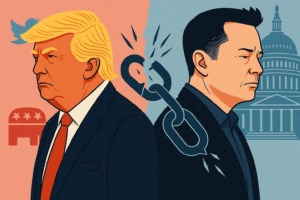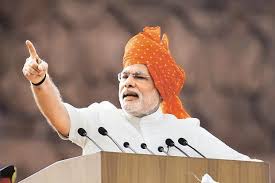Top 10 Most Influential Figures in India (2025): Shaping the Nation’s Destiny
India in 2025 stands at a pivotal moment in its history—a nation surging ahead as an economic powerhouse, a diplomatic force, and a crucible of innovation and social change. Behind this transformation are individuals whose vision, leadership, and influence reach far beyond their official titles. Here’s an in-depth look at the ten most influential figures in India today, exploring their roles, achievements, and the impact they have on the country’s trajectory.
1️⃣ Narendra Modi: The Architect of New India
As India’s Prime Minister since 2014, Narendra Modi’s imprint on the nation is unmistakable. In his third term, Modi continues to drive India’s ambition to become a $5 trillion economy, focusing on infrastructure, digital transformation, and global engagement114. His government’s policies have accelerated the growth of sectors like steel, technology, and renewable energy, while initiatives such as “Digital India” and “Make in India” have positioned the country as a global manufacturing and IT hub.
Modi’s leadership is marked by a blend of economic pragmatism and strong nationalism. Under his stewardship, India has become the world’s fifth-largest economy, with projections to soon overtake Germany and Japan3. Internationally, Modi’s assertive foreign policy has elevated India’s standing, with active participation in forums like the G20 and BRICS. Domestically, his focus on welfare schemes, infrastructure, and women’s empowerment continues to resonate with millions, as reflected in his consistently high approval ratings11.
2️⃣ Amit Shah: The Master Strategist
Amit Shah, India’s Union Home Minister and the chief architect of the BJP’s electoral juggernaut, is widely regarded as the party’s principal strategist2. Shah’s organizational skills have transformed the BJP into the dominant force in Indian politics, expanding its reach from traditional strongholds to new territories across the country.
As Home Minister, Shah has overseen crucial reforms in internal security, counter-terrorism, and the integration of Jammu & Kashmir. His ability to forge alliances, energize party cadres, and execute complex electoral strategies has been instrumental in BJP’s repeated national victories. Shah’s influence extends to policy-making, where he plays a key role in shaping the government’s legislative agenda and ensuring its smooth passage through Parliament.
3️⃣ S. Jaishankar: India’s Diplomatic Face
External Affairs Minister S. Jaishankar has redefined India’s foreign policy with his pragmatic, confident, and globally engaged approach3. A seasoned diplomat, Jaishankar has steered India through complex international challenges, from border tensions to global economic shifts. He emphasizes India’s role as a “confident, assertive player” on the world stage, leveraging opportunities for growth and partnership.
Jaishankar’s tenure has seen India strengthen ties with major powers, expand its influence in the Indo-Pacific, and champion the interests of the Global South. His vision of India as a “leading power” is reflected in the country’s active participation in global forums and its growing role in shaping international norms and alliances.
4️⃣ Mohan Bhagwat: The Ideological Anchor
Mohan Bhagwat, chief of the Rashtriya Swayamsevak Sangh (RSS), wields immense influence as the ideological mentor of the ruling BJP4. Bhagwat’s vision of a unified, strong, and culturally assertive India has shaped the party’s policies and priorities, especially in areas of social cohesion, national security, and cultural revival.
Under Bhagwat’s leadership, the RSS has championed the idea of “Hindu unity” and the transformation of India into a major military and economic force. He has called for combining “virtue with strength,” emphasizing that true security comes from internal unity and moral clarity. Bhagwat’s influence is felt not just in politics, but also in the broader social and cultural fabric of India.
5️⃣ Nirmala Sitharaman: The Economic Steward
Finance Minister Nirmala Sitharaman has made history by presenting a record eight consecutive Union Budgets, guiding India’s economic strategy through turbulent times5. Her leadership has been pivotal during periods of global slowdown and domestic challenges, balancing fiscal prudence with the need for growth and welfare.
Sitharaman’s budgets have focused on infrastructure, digitalization, and social welfare, while also navigating calls for tax relief and economic reforms. Her stewardship is credited with maintaining macroeconomic stability and positioning India as a resilient, fast-growing economy. As the country faces new challenges and opportunities, Sitharaman remains central to shaping its financial future.
6️⃣ Yogi Adityanath: The Transformation of Uttar Pradesh
Yogi Adityanath, Chief Minister of Uttar Pradesh, has overseen the transformation of India’s most populous state from a “BIMARU” (laggard) region to a “growth engine” of the Indian economy6. His administration is credited with improving law and order, driving infrastructure projects, and fostering an environment of investment and job creation.
Adityanath’s governance model emphasizes good governance, security, and the promotion of Sanatan (eternal) cultural values. Under his leadership, Uttar Pradesh has emerged as a key player in India’s economic and social development, with a renewed focus on prosperity, security, and cultural pride.
7️⃣ Rajnath Singh: Defence and Reform
As Defence Minister, Rajnath Singh has championed a new era of reforms aimed at modernizing India’s armed forces and boosting indigenous defence production71215. Singh’s vision for a technologically advanced, battle-ready military has led to the integration of AI, robotics, and emerging technologies into defence planning.
2025 has been declared the “Year of Defence Reforms,” with a focus on jointness, integration, and the creation of integrated theatre commands. Singh’s efforts to streamline procurement, foster public-private partnerships, and increase defence exports are positioning India as a global defence hub. His emphasis on deterrence and peace through strength reflects a pragmatic approach to national security.
8️⃣ Ashwini Vaishnaw: The Tech and Infrastructure Visionary
Union Minister Ashwini Vaishnaw oversees Railways, Electronics & IT, and is at the forefront of India’s digital and infrastructure revolution813. Vaishnaw’s ambitious projects include the rollout of a 14,000-GPU supercomputing facility, advancements in semiconductor manufacturing, and the debut of hydrogen-powered and bullet trains.
His vision for a greener, technologically advanced railway network and a thriving domestic electronics industry is reshaping India’s infrastructure landscape. Vaishnaw’s focus on participatory governance and citizen-centric policies underscores the government’s commitment to inclusive development and innovation.
9️⃣ Rahul Gandhi: The Revitalized Opposition
Rahul Gandhi, Leader of the Opposition and scion of the Nehru-Gandhi family, is spearheading the Congress party’s efforts to reinvent itself in the face of BJP dominance9. In 2025, Gandhi has prioritized organizational restructuring, internal democracy, and grassroots engagement, embarking on extensive state tours to energize party cadres and identify new leadership.
Gandhi’s strategy draws inspiration from the Indira Gandhi era, focusing on decentralization and empowering district committees. His vocal criticism of the government and efforts to rebuild the Congress as a credible alternative are reshaping the contours of Indian opposition politics.
🔟 Mukesh Ambani: The Business Titan and Cultural Visionary
Mukesh Ambani, Chairman of Reliance Industries, is not just India’s richest man but also a visionary shaping the nation’s economic and cultural future10. Ambani’s investments in digital infrastructure, green energy, and media have transformed entire sectors, making Reliance a global powerhouse.
In 2025, Ambani unveiled a bold vision for India to lead the global entertainment revolution, leveraging technology and content creation. His emphasis on India’s digital revolution, demographic dividend, and technological leadership positions the country as a future epicentre of global creativity and economic growth.
The Interplay of Power: How These Figures Shape India
These ten individuals represent the diverse forces driving India’s transformation:
- Political Leadership: Modi, Shah, Adityanath, and Gandhi shape the nation’s political landscape, setting the agenda for governance, opposition, and social change.
- Ideological Influence: Bhagwat’s RSS provides the ideological framework that guides policy and public discourse.
- Economic Stewardship: Sitharaman and Ambani drive economic growth, innovation, and resilience.
- Global Engagement: Jaishankar’s diplomacy and Singh’s defence reforms project India’s power and values on the world stage.
- Technological Vision: Vaishnaw’s focus on infrastructure and digitalization is preparing India for the challenges and opportunities of the 21st century.
Their collective influence is felt not just in government corridors or boardrooms, but in the lives of over 1.4 billion Indians—through policies, investments, reforms, and cultural shifts.
Challenges and Opportunities Ahead
While these leaders have steered India to new heights, significant challenges remain:
- Social Cohesion: Balancing rapid modernization with social harmony and inclusion.
- Economic Inequality: Ensuring the benefits of growth reach all sections of society.
- Global Uncertainty: Navigating a volatile geopolitical environment and climate change.
- Democratic Values: Preserving press freedom, institutional integrity, and participatory governance.
India’s future will depend on how these influential figures adapt to changing realities, foster collaboration, and inspire the next generation of leaders.
Conclusion: The Road Ahead
The story of India in 2025 is one of ambition, resilience, and transformation. The ten most influential figures profiled here are not just shaping the present—they are laying the foundations for a future where India is a global leader in economy, culture, technology, and diplomacy.
As the nation moves forward, the interplay between political vision, economic dynamism, social values, and technological innovation will define its path. The world is watching, and India’s leaders are ready to write the next chapter in the country’s remarkable journey.




